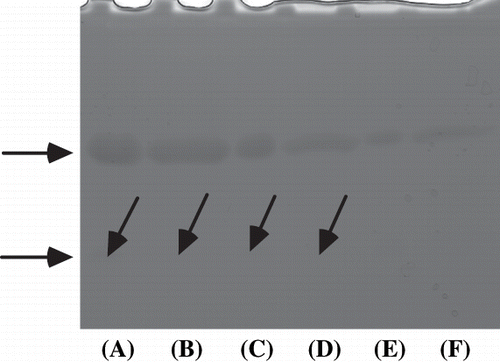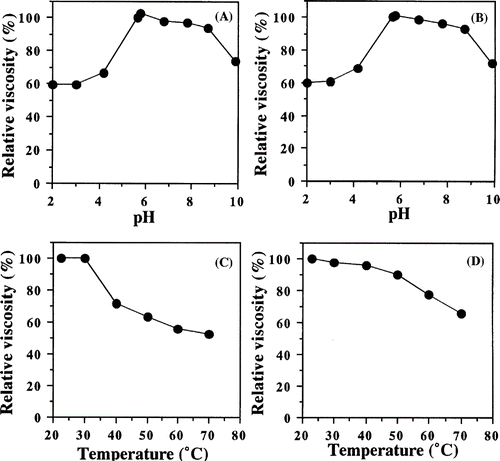Figures & data
Figure 1 Purification of viscous protein from yam (Dioscorea opposita Thunb.) tuber mucilage tororo. (A) Phenyl-Toyopearl 650M column chromatography. (B) DEAE-Toyopearl 650M column chromatography of the Phenyl-Toyopearl 650M fraction. (C) CM-Toyopearl 650M column chromatography of the DEAE-Toyopearl 650M fraction.
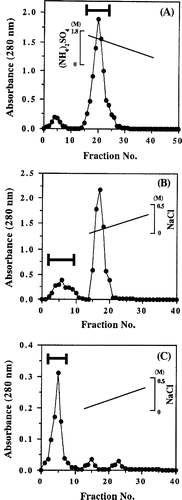
Table 1 Purification of viscous protein from yam tuber mucilage tororo.
Figure 2 Nondenaturating polyacrylamide gel electrophoresis of the purified viscous protein from yam (D. opposita Thunb.) tuber mucilage tororo. (A) Molecular weight markers; (B) Purified viscous protein.
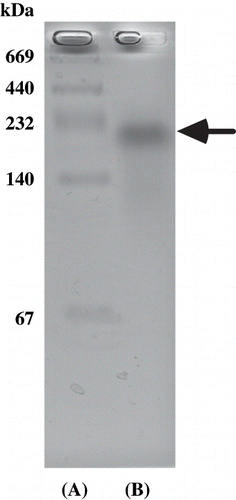
Figure 3 Estimation of molecular weight of the purified viscous protein from yam (D. opposita Thunb.) tuber mucilage tororo by gel filtration on Toyopearl HW-55F column (1.5 × 70 cm). The column was eluted with 10 mM sodium phosphate buffer (pH 6.0). The standard proteins used were as indicated.
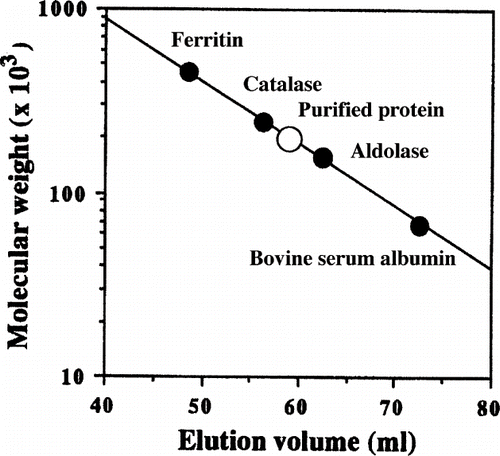
Figure 4 SDS-polyacrylamide gel electrophoresis of molecular weight markers and purified viscous protein from yam (D. opposita Thunb.) tuber mucilage tororo. (A) Low molecular weight markers; (B) purified protein without reducing reagent; (C) purified protein with reducing reagent; (D) High molecular weight markers.
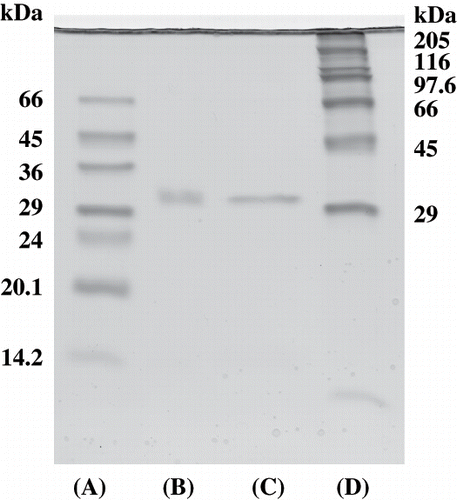
Figure 5 Carbonic anhydrase activity staining of crude extracts, DEAE-Toyopearl 650M fraction, and the purified viscous protein from yam (D. opposita Thunb.) tuber mucilage tororo. (A) crude extracts without reducing reagent; (B) crude extracts with reducing reagent; (C) DEAE-Toyopearl 650M fraction without reducing reagent; (D) DEAE-Toyopearl 650M fraction with reducing reagent; (E) purified protein without reducing reagent; (F) purified protein with reducing reagent.
